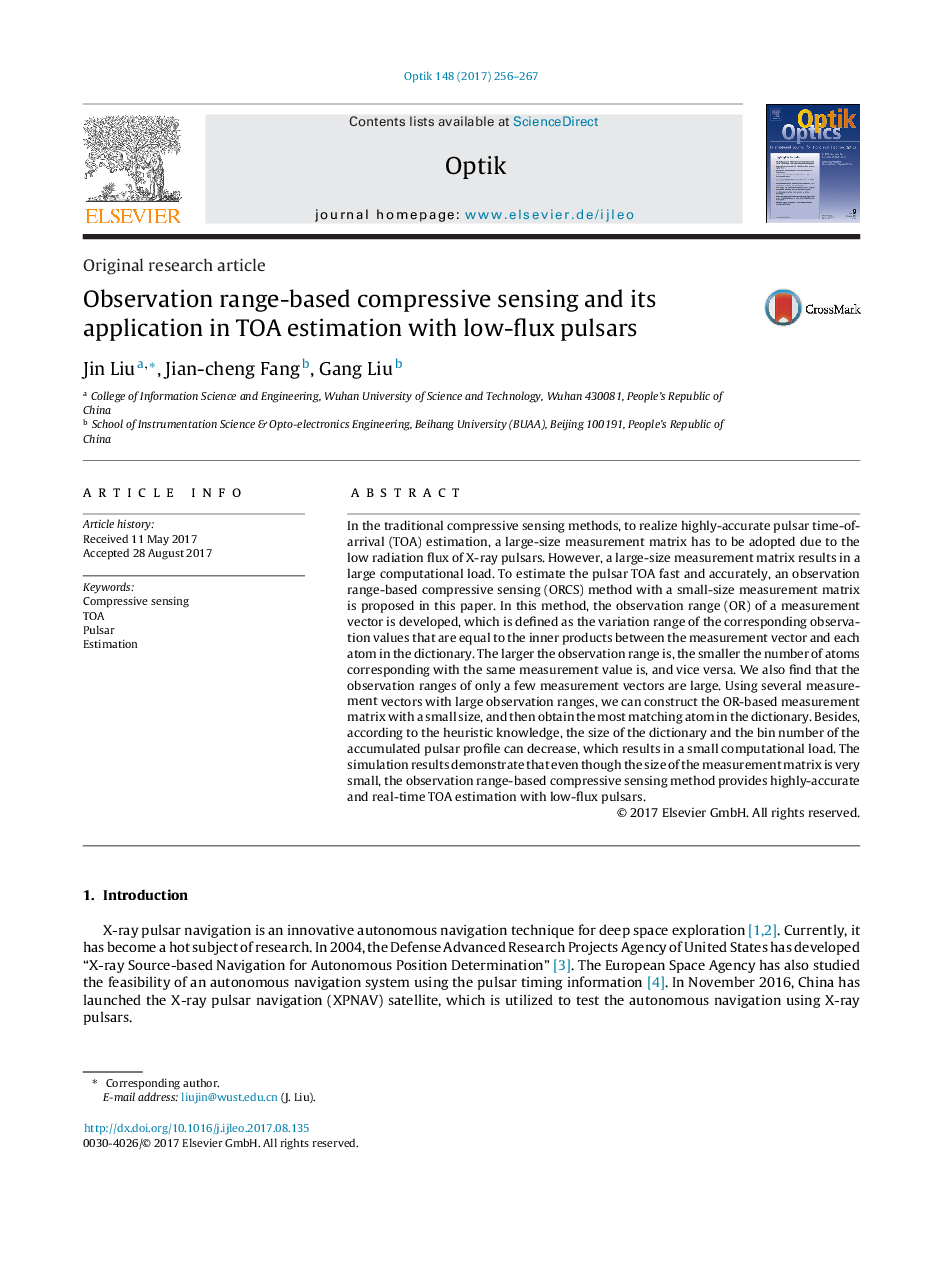| Article ID | Journal | Published Year | Pages | File Type |
|---|---|---|---|---|
| 5025057 | Optik - International Journal for Light and Electron Optics | 2017 | 12 Pages |
Abstract
In the traditional compressive sensing methods, to realize highly-accurate pulsar time-of-arrival (TOA) estimation, a large-size measurement matrix has to be adopted due to the low radiation flux of X-ray pulsars. However, a large-size measurement matrix results in a large computational load. To estimate the pulsar TOA fast and accurately, an observation range-based compressive sensing (ORCS) method with a small-size measurement matrix is proposed in this paper. In this method, the observation range (OR) of a measurement vector is developed, which is defined as the variation range of the corresponding observation values that are equal to the inner products between the measurement vector and each atom in the dictionary. The larger the observation range is, the smaller the number of atoms corresponding with the same measurement value is, and vice versa. We also find that the observation ranges of only a few measurement vectors are large. Using several measurement vectors with large observation ranges, we can construct the OR-based measurement matrix with a small size, and then obtain the most matching atom in the dictionary. Besides, according to the heuristic knowledge, the size of the dictionary and the bin number of the accumulated pulsar profile can decrease, which results in a small computational load. The simulation results demonstrate that even though the size of the measurement matrix is very small, the observation range-based compressive sensing method provides highly-accurate and real-time TOA estimation with low-flux pulsars.
Related Topics
Physical Sciences and Engineering
Engineering
Engineering (General)
Authors
Jin Liu, Jian-cheng Fang, Gang Liu,
